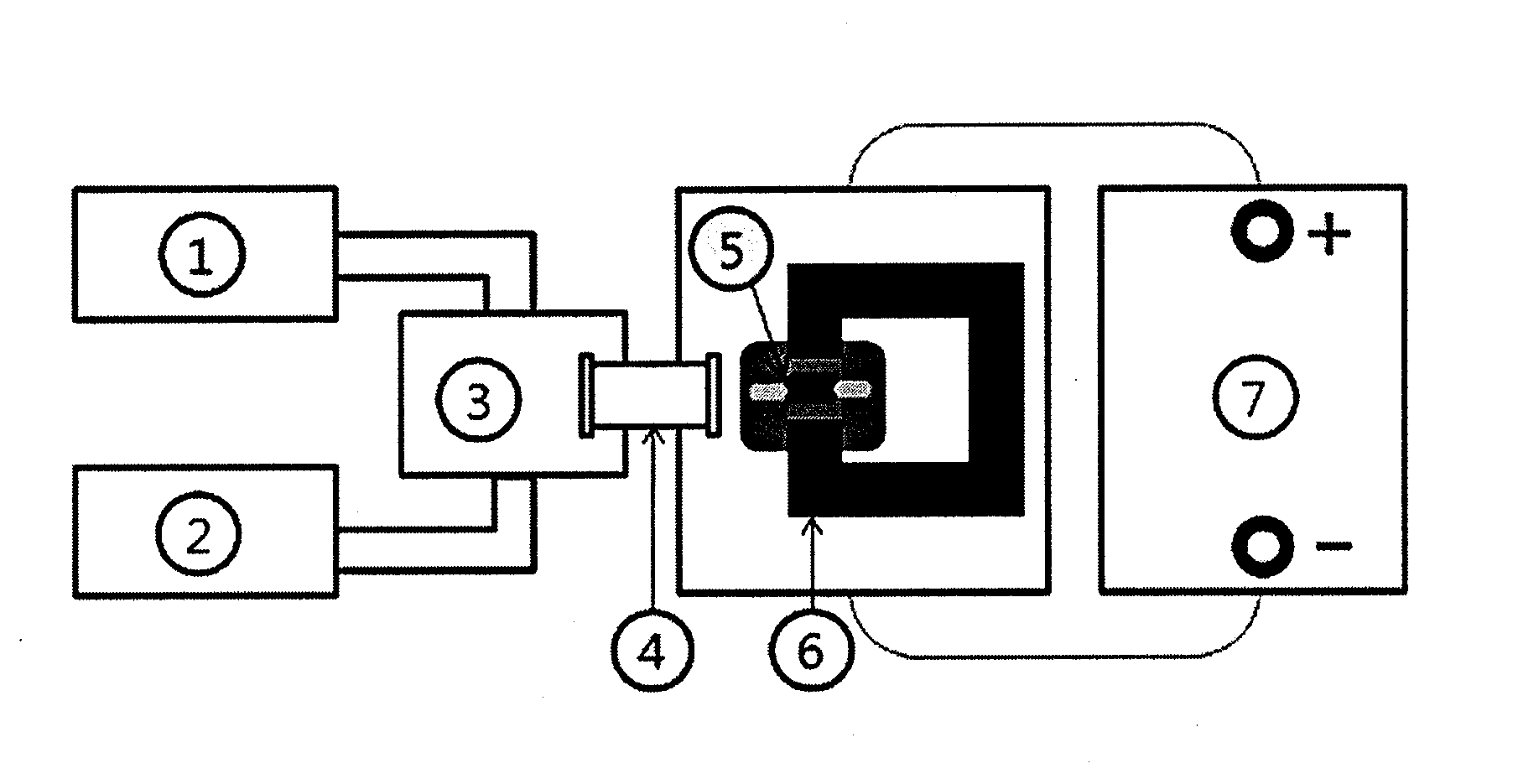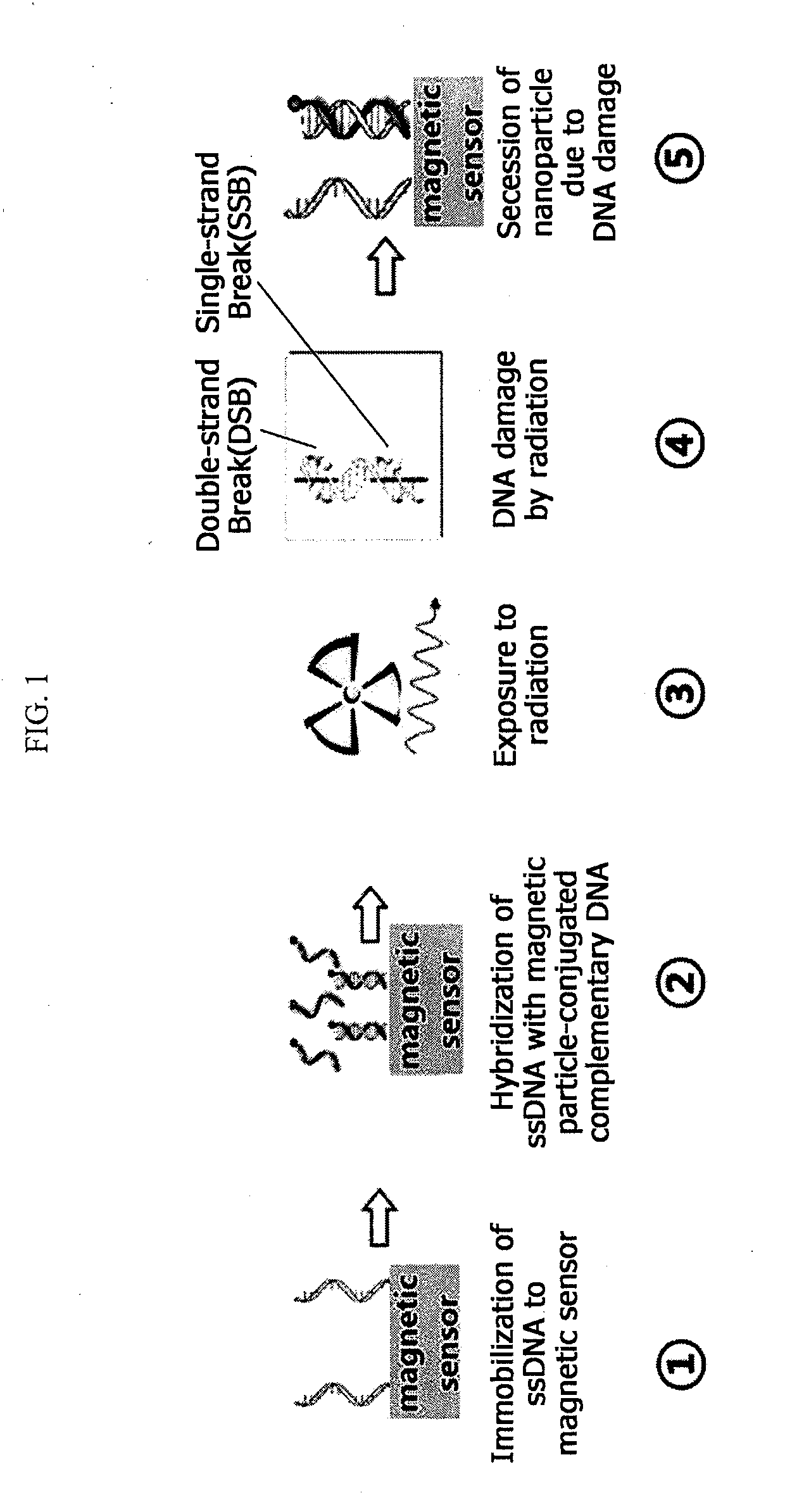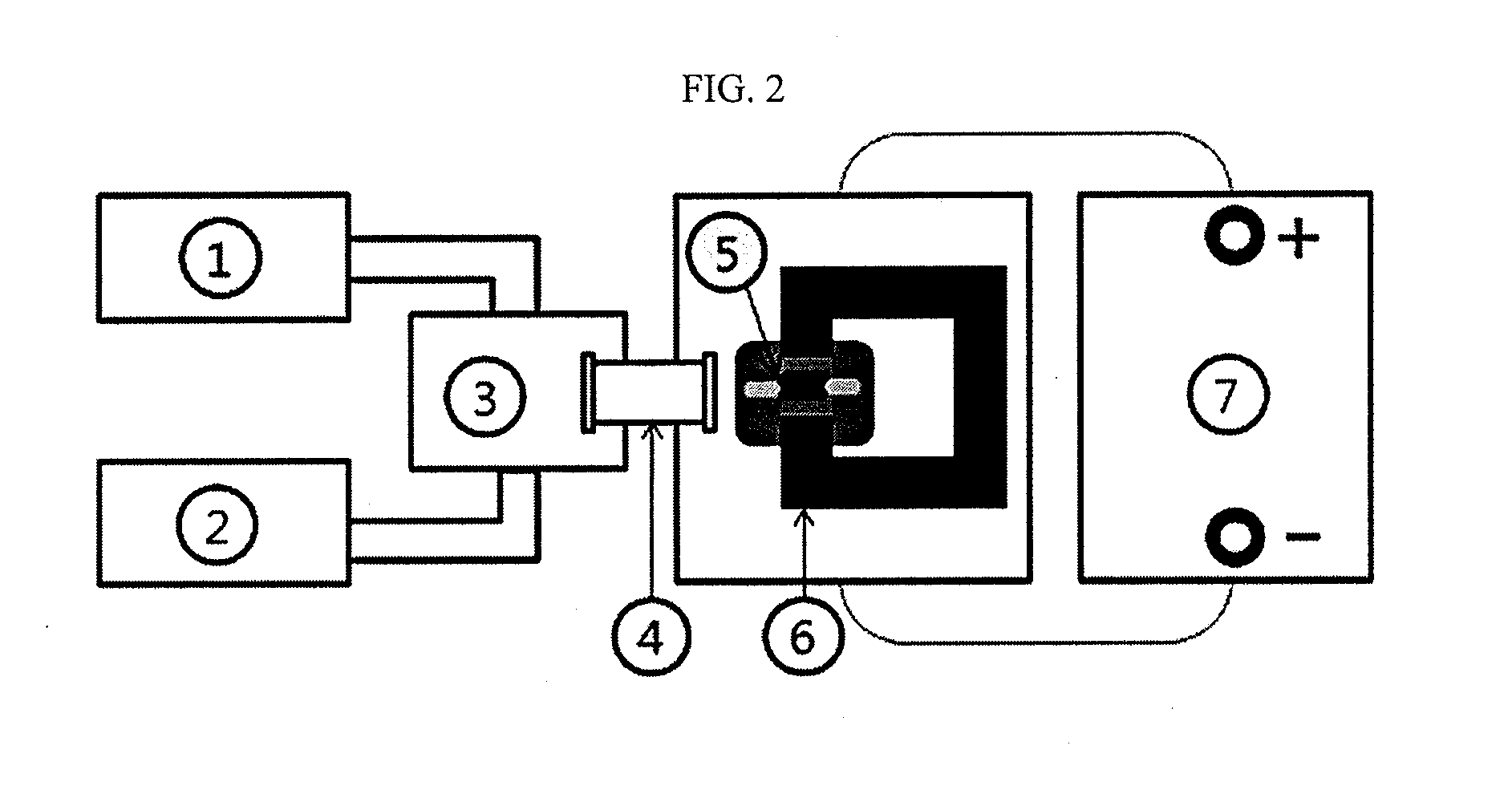Method for detection of radiation-induced damage to biomaterial using magnetic sensor and magnetic sensor biochip for biodosimetry using the same
a biomaterial and radiation-induced damage technology, applied in the direction of material analysis using wave/particle radiation, instruments, suspensions, etc., can solve the problem of not being able to accurately determine the radiation exposure degree, unable to inform the radiation effect of the organism, and requiring a lot of analysis time, etc., to achieve accurate measurement of the change of the biomaterial and high sensitivity
- Summary
- Abstract
- Description
- Claims
- Application Information
AI Technical Summary
Benefits of technology
Problems solved by technology
Method used
Image
Examples
example 1
Fabrication of Magnetic Sensor Biochip for Biodosimeter
[0034]A magnetic sensor biochip for biodosimetry was fabricated. To begin with, a thiol-caped single-stranded DNA (HS-ssDNA) was synthesized (by Genotech), and was then absorbed and immobilized to the surface of a gold electrode-coated magnetic sensor. Mercaptohexanol (MCH) was applied to the surface to form an MCH layer so that HS-ssDNA was bound to the surface only via the terminal thiol group while preventing the backbone of the immobilized DNA from being in contact with the magnetic sensor. The biochip thus fabricated is schematically depicted in FIG. 2.
example 2
Detection of DNA Damage Using Magnetic Sensor Biochip for Biodosimetry
[0035]For use in examining whether the magnetic sensor biochip for biodosimetry, fabricated in Example 1, detected DNA damage, a single-stranded DNA complementary to the DNA immobilized to the biochip was synthesized, and conjugated with biotin at the 5′ terminus (performed by Genotech). The biotin-conjugated DNA was coupled with a magnetic nanoparticle the surface of which was modified with streptavidin. Subsequently, the magnetic particle-coupled DNA was hybridized with the DNA immobilized to the magnetic sensor biochip for biodosimetry to form a DNA duplex before the biochip was exposed to radiation with a dose of 0.05 Gy. Electric signals were monitored with a change in the magnetic field of the magnetic sensor and with time. The results are shown in FIGS. 3 and 4, respectively.
[0036]As is understood from the data of FIG. 3, electric signals were detected at lower levels from the DNA-hybridized biochip (P9_DNA...
example 3
Resistance of Linker Against Radiation
[0039]Sys Protein-G (Micobio) or ProLink (Proteogen) was employed to conjugate a linker to the magnetic sensor therethrough. The linker was measured for radiation resistance using cyclic voltammetry (CV). The results are given in FIG. 5.
[0040]In FIG. 5B, the first bar represents a measurement from a gold-plated electrode as a control, without conjugation with the linker, while the others starting from the second bar show peak currents measured in the linker-conjugated gold films on electrodes using CV at various doses of radiation (0.01 Gy 10 Gy). As can be seen, the linker (Sys Protein-G) conjugated to the gold film did not experience a change even at a dose of 10 Gy. The results indicate that the amphipathic molecule Sys Protein-G or ProLink is resistant to radiation so that it can be used to conjugate a linker to the surface of the magnetic sensor therethrough.
[0041]Although embodiment(s) of the present invention have (has) been disclosed for...
PUM
| Property | Measurement | Unit |
|---|---|---|
| Frequency | aaaaa | aaaaa |
| Electrical resistance | aaaaa | aaaaa |
| Energy | aaaaa | aaaaa |
Abstract
Description
Claims
Application Information
 Login to View More
Login to View More - R&D
- Intellectual Property
- Life Sciences
- Materials
- Tech Scout
- Unparalleled Data Quality
- Higher Quality Content
- 60% Fewer Hallucinations
Browse by: Latest US Patents, China's latest patents, Technical Efficacy Thesaurus, Application Domain, Technology Topic, Popular Technical Reports.
© 2025 PatSnap. All rights reserved.Legal|Privacy policy|Modern Slavery Act Transparency Statement|Sitemap|About US| Contact US: help@patsnap.com



